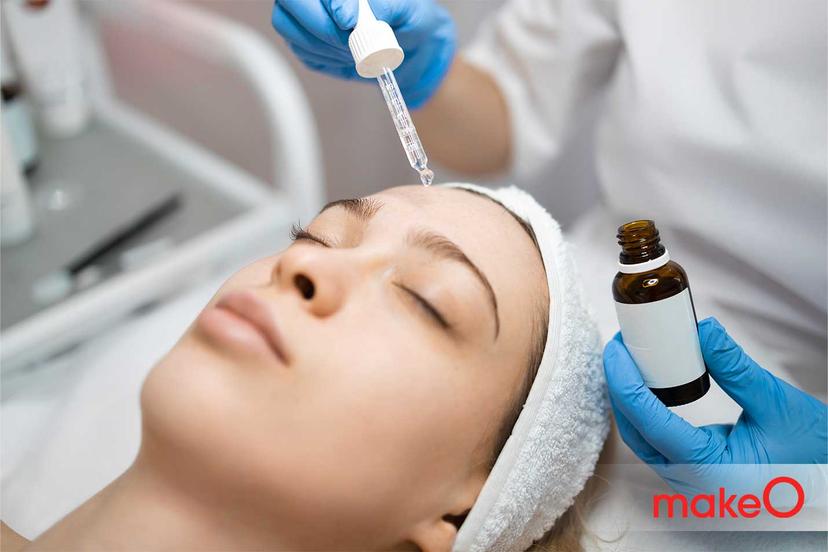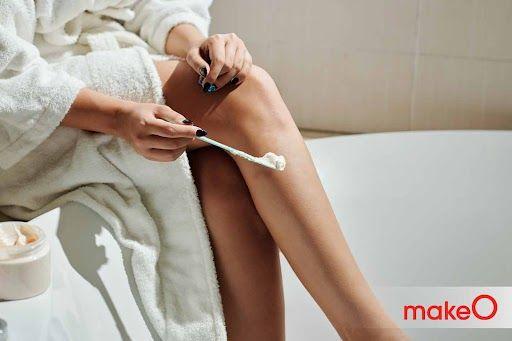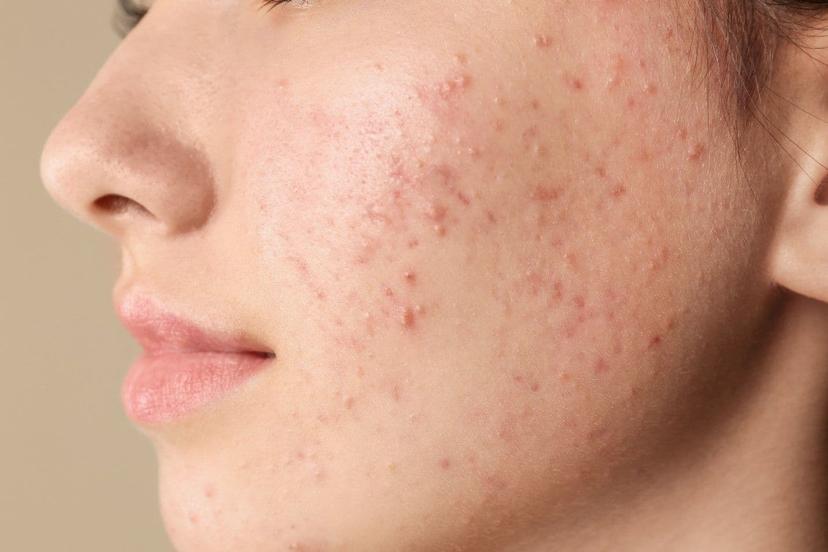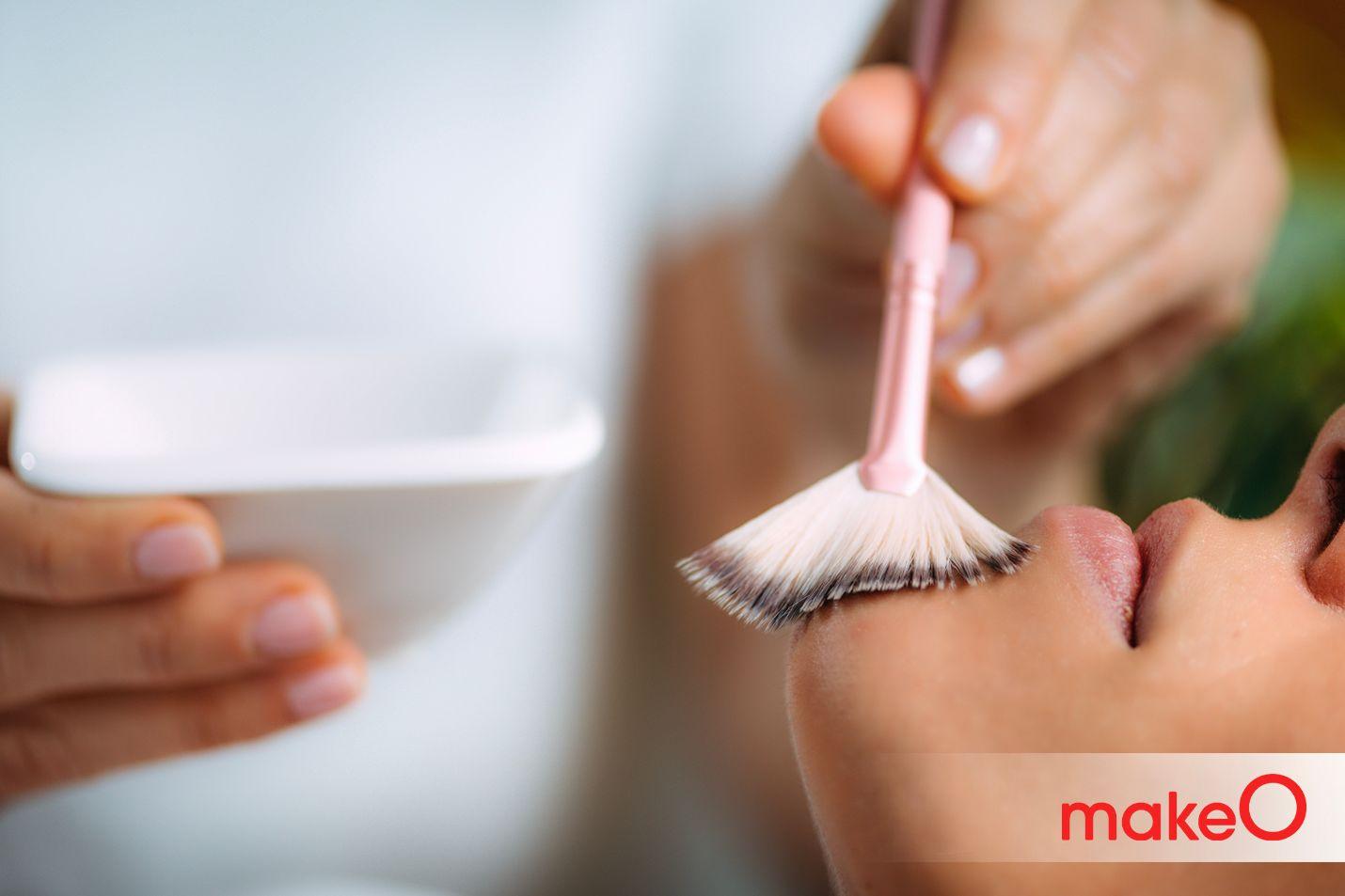MakeO blog
What is a chemical peel?
A chemical peel is a highly effective skin treatment that is done only by trained professionals like dermatologists and estheticians. A chemical peel procedure involves the use of complex chemical ingredients that are safely applied to the skin. These chemicals react with the dead skin cells and excess oil on the face and peel them away. Chemical peel treatments are hence perfect for skin revival, fighting acne and acne marks, reducing the signs of ageing and more.
How do chemical peels work?
There are many myths and facts that are popular about chemical myths. This can be confusing to someone who is thinking of trying their first peel. So before you do anything, you must ask professionals, salons or the internet this: how do chemical peels work?
And once you sign up for a chemical peel, you must take a few precautions before the peel. When you visit the skin clinic for your appointment, the professional first ensures that your face is entirely clean. Following that, a chemical solution (depending on which type of peel you choose) is applied with an applicator or a cotton ball on your entire face.
Types of chemical peels
There are three main types of chemical peels that professionals prescribe to users based on their skin type, conditions and needs.
1. Light or superficial peels: These are mild formulation peels that work on the epidermis or the topmost layer of the skin and target acne, fine lines, wrinkles and uneven skin. Results last for 2-5 weeks.
2. Medium peels: Medium feels are slightly stronger chemical formulations which affect the epidermis and the dermis of the skin. These types of chemical peels are best for acne scars and wrinkles.
3. Deep peels: For severe acne scars and deep-set wrinkles, deep peels are best suited. These peels are intensive and require a lot of downtime, however, the results of deep peels generally last a lifetime.
What to expect during a chemical peel? A Step-by-Step Guide
Step 1
The technician or dermatologist will use a cotton swab or an applicator to apply the chemical solution evenly on your face. You might face a slight tingling sensation while undergoing a light or medium peel. You will surely experience more discomfort and stinging when going through a deep peel.
Step 2
Once the solution is applied, the chemicals will begin to react with your skin and this treated skin will begin to whiten. For mild to deep peels, many professionals will apply cold compresses to cool the skin down.
Step 3
After this, in about 15-20 minutes, a neutralising wash is applied to the face to remove the chemical peel.
Once you complete your chemical peel, it is possible that you migh face redness, irritated skin and even some swelling.
Aftercare: How to take care of your skin after a chemical peel procedure
- Religiously follow your doctor’s or technician’s advice and instructions about chemical peel aftercare.
- Always apply a generous amount of sunscreen before stepping out to prevent any contact between your treated skin and the sun’s harmful rays. For comfortable, effective and broad spectrum sun protection, choose makeO skinnsi smart ultra matte cream gel sunscreen. It is SPF 50, fragrance-free, BHA-free, vegan, cruelty-free and paraben-free too!
- Avoid scratching or itching your treated skin to ensure it is safe and undisturbed.
- Use a soothing ointment or petroleum jelly as advised to soothe the skin and prevent dullness.
- For those who are experiencing more pain than a medium or deep peel, ensure to take over-the-counter painkillers and use cold compresses to reduce redness.
- Chemical peels for sensitive skin particularly require the use of soothing ointments, petroleum jelly and cool compresses.
Get professional chemical peels at home with makeO skinnsi
Going to skin clinics and frequenting parlours can be a daunting task when one leads a busy life. makeO skinnsi is a direct skin solution to this problem. Being one of the leading skincare brands, skinnsi provides at-home skin services like chemical peels, derma facials, laser hair removal and more. Each of our skin services is dermatologically backed, skin-friendly and highly effective in producing long-lasting results.
In short, the chemical peel process day by day is not complicated. Since the entire procedure involves the use of a chemical solution applied all over the face, most chemical peel procedures are done within 20-30 minutes. Only deep peels take over 90 minutes to complete. They are extremely beneficial for the skin and can fight many skin issues like wrinkles, fine lines, acne, acne scars, dryness and dull skin. So if you are looking for a solution to such skin issues, then book your appointment with makeO skinnsi today!
FAQs
What are the steps for a chemical peel?
There are very few chemical peel steps involved in a traditional chemical peel procedure. It begins with the professional cleaning your face and applying the chemical solution with an applicator. This solution is kept on for 15-20 minutes. During this time, the skin lightens and all the dead skin cells are peeled off. Post this, a neutralising solution is used to take off the chemicals and a cool compress is used to cool the skin.
Is chemical peeling good for your skin?
Yes, chemical peel procedures are a great solution for skin problems like wrinkles, fine lines, acne, acne scars, dryness and dullness.
What are the side effects of a chemical peel?
Commonly, you will notice skin peeling, redness, irritation, swelling and more in the first few days after the peel. This is normal and heals quickly when you take the right precautions and follow the instructions suggested by your technician.
What should you avoid after a chemical peel?
Things you should avoid after a chemical peel are
- Stepping out into the sun without using an SPF
- Picking or scratching the treated skin
- Using fragranced moisturisers or heavy moisturisers
- Skipping moisturiser or soothing products like ointments or petroleum jelly
- Exfoliating
related categories
Related articles

Anti-Ageing Face Oils: Unveiling the 10 Best Facial Oils for Youthful Skin

Is Aloe vera effective for acne? Find out

5 Side Effects of Hair Removal Creams That You Must Know

5 Common Mistakes to Avoid When Using a Face Roller

